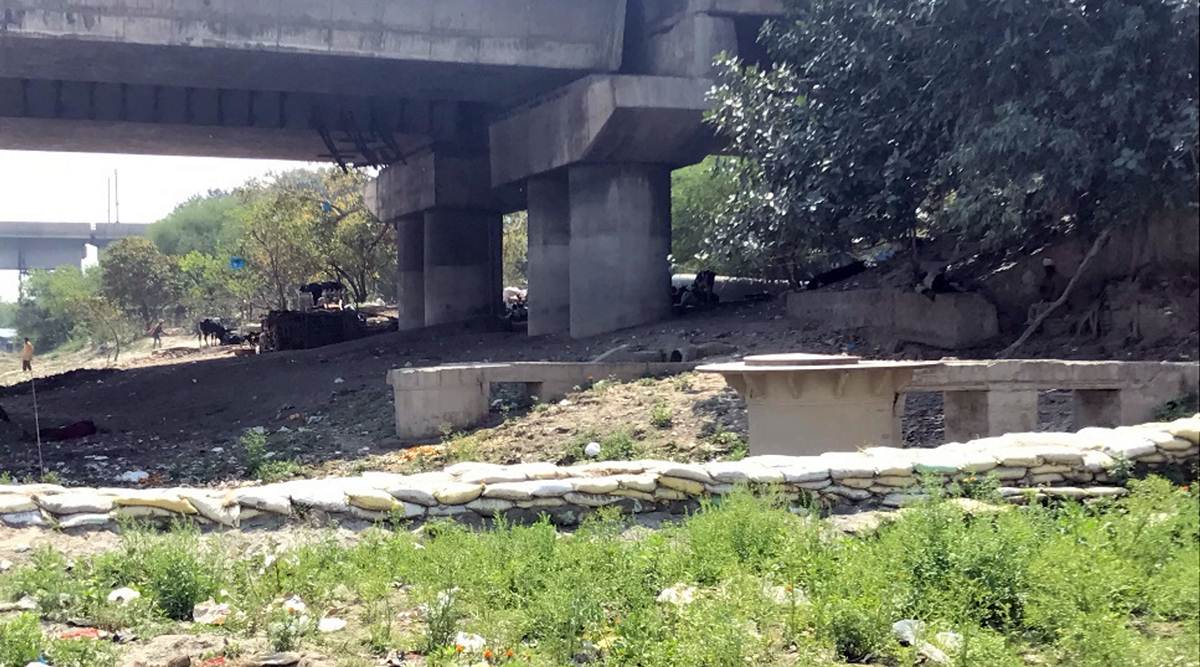 Work on the ghat began about a month ago
Work on the ghat began about a month agoThe Indian National Trust for Art and Cultural Heritage (INTACH) has kickstarted work on the restoration of what may be ghats from the period between 1857 and the 1940s on the banks of the Yamuna near Kashmere Gate.
Older ghats dating back to the Mughal period like the Qudsia Ghat, built by Qudsia Begum, wife of Mughal emperor Mohammad Shah, in the 18th Century, may now be under what is now the Ring Road, said Divay Gupta, Principal Director, Architectural Heritage division, INTACH. But the river may have changed its course, and when the river moved, the ghats were relocated, he said.
 The proposed plan
The proposed plan The ones that are being restored now are likely to date back to around the mid-19th century, Gupta added. “There were some ghats there, which we discovered under the river sand in 2021. Those will be repaired, restored or rebuilt. We are also making a garden, which will be a reconstruction of what the garden would have looked like, along the river… based on what the old Qudsia Garden of the Mughal period would have looked like,” Gupta said.
Today, the Qudsia Bagh lies across the road from the river, with the road separating the garden and the ghats.
Subscriber Only Stories
The project to restore Qudsia Ghat is part of the Delhi Development Authority’s (DDA) 10-part project to “restore and rejuvenate” the Yamuna floodplains. The project, which entails walkways, cycle tracks and gardens along the 22-km stretch of the river, has run into opposition in some places where makeshift homes and farmlands are being cleared to make way for gardens, wetlands and pathways.
Work on the ghat began about a month ago but has been challenging with fluctuating water levels in the river with the arrival of rains. Pathways are being laid out and a parking area is being created.
“The planting pattern will conform to that from the Mughal period. Along the river, there will be grasses, and flowering plants and trees like champa and kachnar beyond the floodline,” Gupta said.
There may have been around 12 to 13 ghats along the stretch, Gupta said. “In some parts, they have been washed away. Some are in bad condition. We will now be making a consolidated stretch of around 1 km,” he added. The DDA is funding the project, which is set to cost around Rs 19 crore for Qudsia Ghat. It is expected to take around six months to complete the project.
Permanent structures are not allowed to be constructed on the floodplains, as per a National Green Tribunal order. On the work on the ghats, Gupta said that no concrete will be used and that they are only being restored or strengthened using piling techniques.
- The Indian Express website has been rated GREEN for its credibility and trustworthiness by Newsguard, a global service that rates news sources for their journalistic standards.

